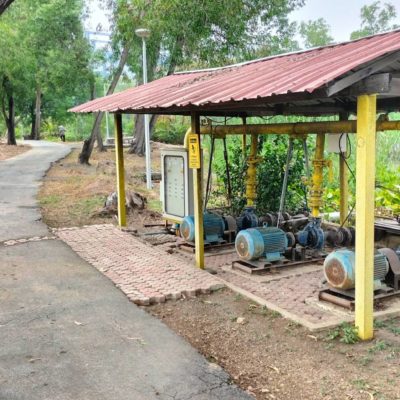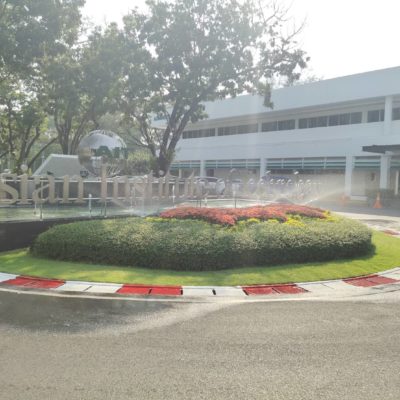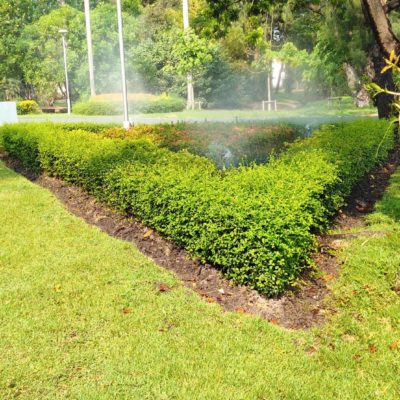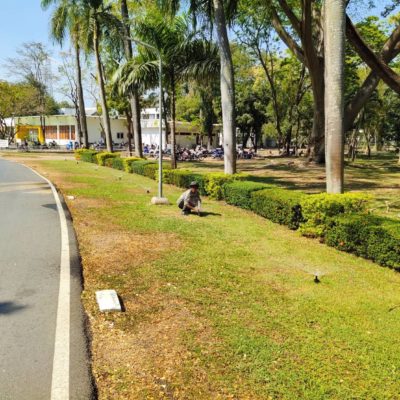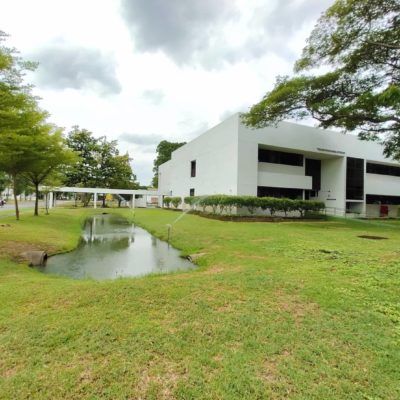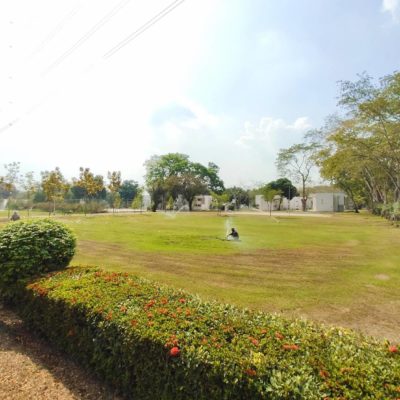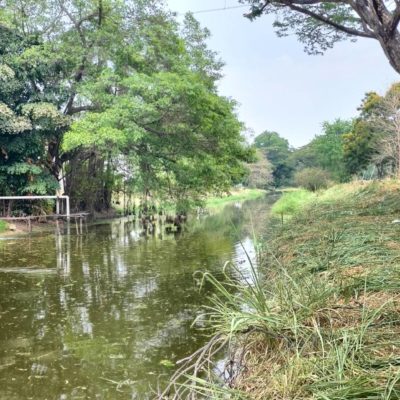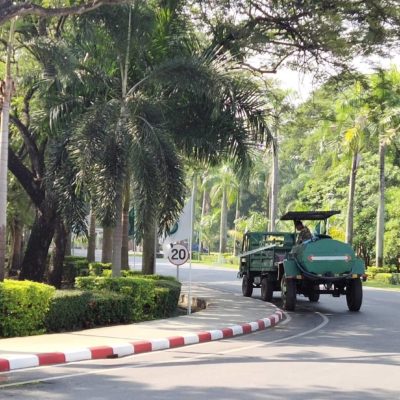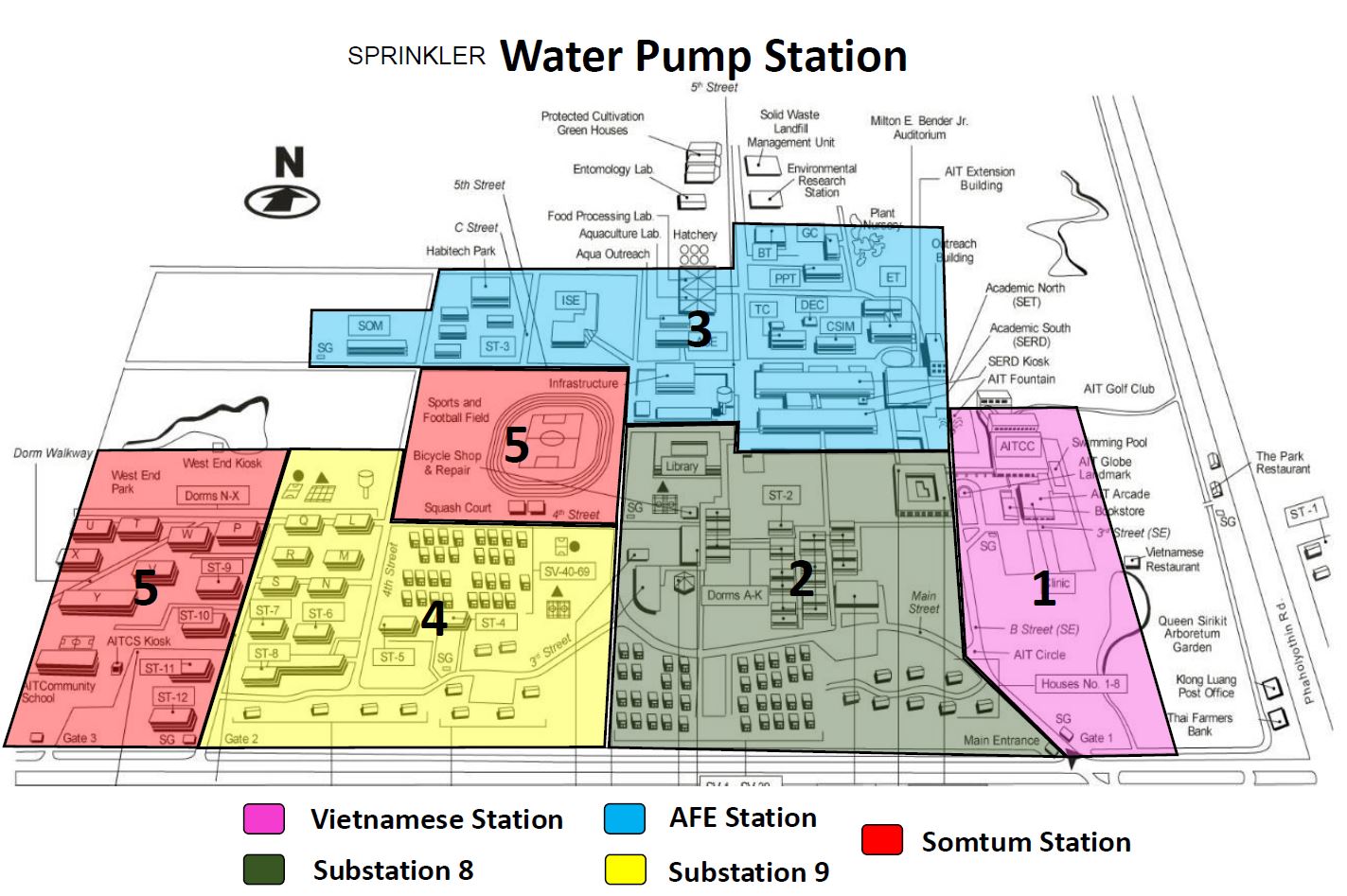AIT Water Conscious Usage and Care
In response to the Ministry of Natural Resources and Environment’s two-decade-long announcement to cancel the use of groundwater due to the high risk of subsidence in the area, the university has transitioned to a more sustainable water supply system. The shift from groundwater to a municipal water supply, sourced from the Provincial Waterworks Authority, was implemented with the installation of an advanced water pipe system. This system features 15 valves for efficient control of water flow, allowing the university to manage water distribution across distinct zones, covering both academic and residential areas for maintenance and repairs.
The initial system, designed in the 1970s, required closing the sluice gates in the valve sump during repairs. Additionally, the old pipeline system, which was mostly laid underground at a depth of about 1 meter, often caused maintenance and repair challenges whenever there was a breakage or leakage in the underground pipes. This frequently disrupted the water supply to various parts of the campus, affecting numerous departments and causing significant water loss as more time was needed to excavate and repair the damaged pipes.
To address these issues, an improvement project was launched to upgrade the water supply system to a Ring Loop configuration. This new setup includes additional water supply control valve wells, replacing most of the old pipelines with new pipes, and incorporating efficient water pumping technology to maintain the required pressure in the water supply across all buildings. A 700 m³ water storage tank was also built to provide emergency water supply in case of disruptions by the Provincial Waterworks Authority. These upgrades enhance the overall reliability of the water supply system, reduce the impact of repairs, and ensure a continuous water supply to all university departments and residential areas.
The new system, equipped with advanced control mechanisms, ensures that the university can quickly switch to a backup water supply if there is no water for more than two days, preventing any disruption to the water supply. This upgrade guarantees that the university can continue its operations smoothly with minimal impact on students, staff, and external visitors.
Additionally, the university monitors over 350 water meters installed across all academic and residential areas to detect internal leaks and monitor water consumption. However, some of these meters are outdated, and to improve the accuracy of water usage measurements and optimize resource management, the university plans to launch a project to replace them with digital water meters. This ongoing initiative is a significant step towards future-proofing the university’s water supply, enhancing the infrastructure, and improving the experience for everyone who relies on the campus’s resources.
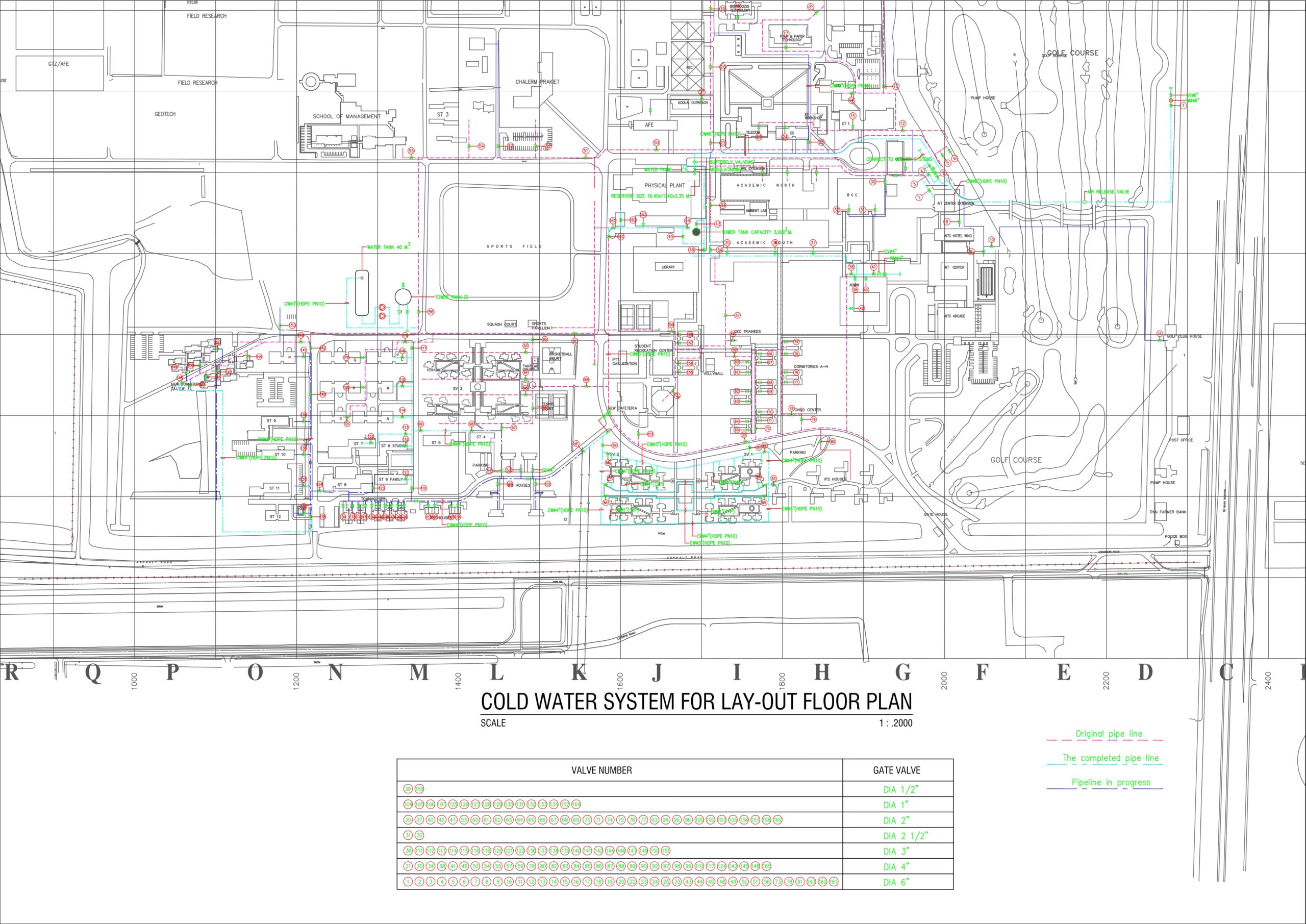
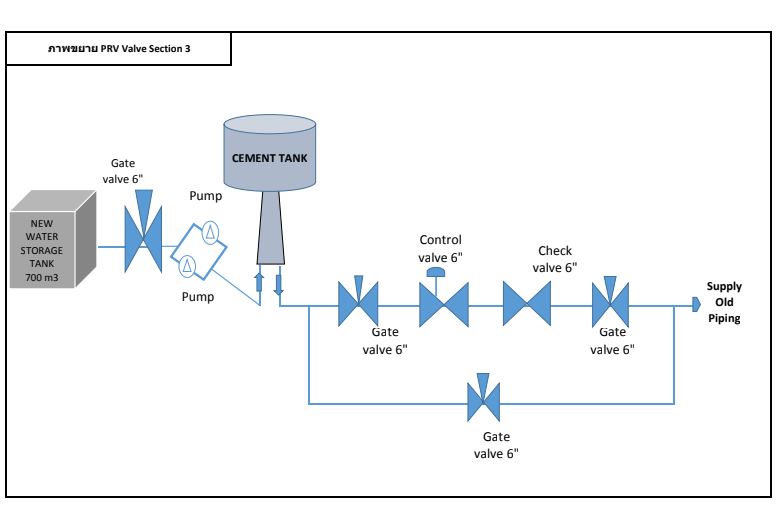
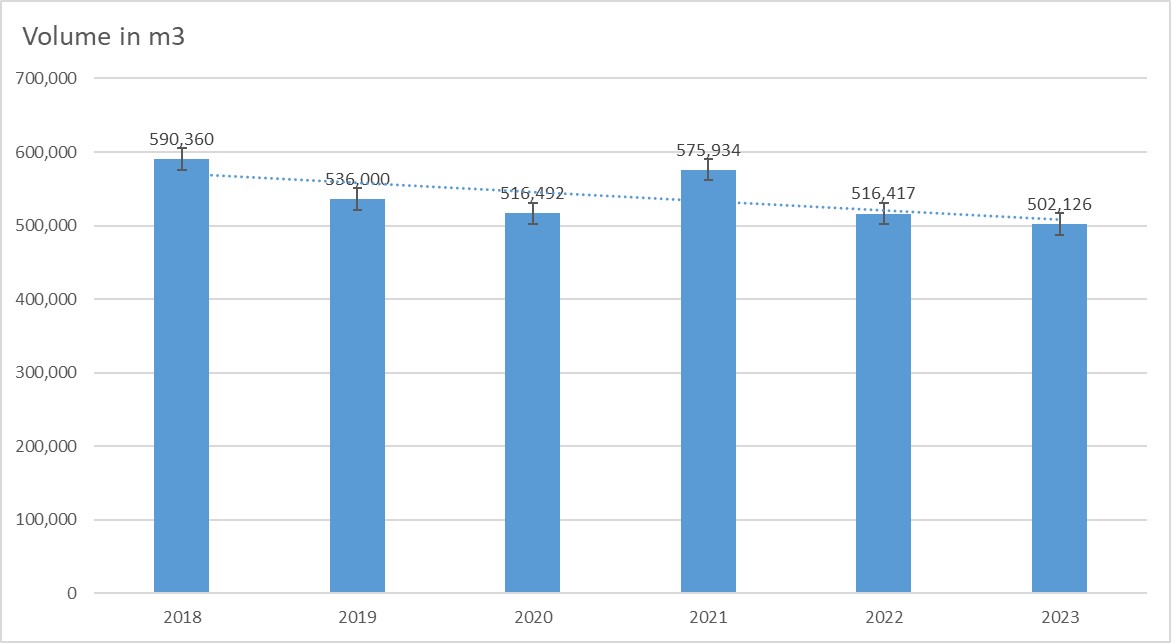
As per the AA-1-2-9 “AIT Sustainability Policy” Annex-2, published on 8 Dec 2021
The Asian Institute of Technology (AIT) is dedicated to sustainable water management through conservation, reuse, and efficient use, in line with its “AIT Sustainability Policy” (AA-1-2-9).
Water Reduction Goals:
- Efficiency: AIT targets a 15% reduction in water usage per square meter by 2026, compared to 2022 levels.
- Resourcefulness: Facilities will be developed to increase rainwater and greywater harvesting by 20% by 2026 from the 2021 baseline.
Measures for Achieving Water Sustainability
Goal 1: Reducing Water Usage
AIT plans to reduce dependency on external water sources by 20% by 2026. To achieve this, AIT has implemented a range of initiatives:
- Awareness Programs: Educates the campus community on water performance and responsible usage, incentivizing conservation.
- Management Systems: A Management Information System monitors and measures water consumption, helping to verify savings.
- Infrastructure Improvements: Old pipes are being replaced, efficient equipment installed, and frameworks established to report and fix leaks promptly.
Goal 2: Increasing Harvesting Facilities AIT has set up efficient mechanisms to collect and retain rainwater in the AIT lake, ensuring water storage for dry seasons and irrigation needs. The campus utilizes a closed-loop canal system and reservoirs, such as a 23.31-acre lake and 77,341.04 square meters of canals, which collect and store rainwater to sustain campus greenery without excessive reliance on tap water.
Additional Sustainability Measures
- Wastewater Treatment and Recycling: AIT’s Wastewater Treatment Plant (WWTP), operational since 2012, has a daily capacity of 1,500 m³ and treats campus wastewater to Thai standards, integrating treated water into AIT’s canal system for irrigation. This also supports the campus’s aquatic ecosystem, especially during dry seasons.
- Water Conservation Practices: To prevent wastage, AIT advocates for practices like checking for leaks, timely repairs, installing water-efficient appliances, and using harvested rainwater for gardening.
- Mangrove Project: The “Botanical Garden Campus for Net Zero” initiative promotes planting freshwater mangroves around campus. These trees are exceptional in carbon storage—up to 6-8 times more than typical trees—and contribute to local biodiversity, superior water quality, and enhanced carbon sequestration.
- Surface Aeration for Canal Health: Surface aerators maintain canal oxygenation, promoting a healthy ecosystem within AIT’s closed-loop canal system. These aerators improve water quality by oxygenating the water, which supports a stable environment for fish and plants.
AIT’s commitment to these strategies is an integral part of its role as a sustainability steward, actively enhancing water conservation while fostering biodiversity and environmental health
Measures taken to achieve the goals
1. AIT Canal System to Harvest Rain Water
On our campus, we maintain a robust system of canals and reservoirs designed for efficient rainwater harvesting and storage. This system is meticulously managed to prevent the accumulation of pollutants and the wastage of rainwater. Instead of allowing it to simply runoff, we actively collect and store rainwater. This collected water is then utilized for the irrigation of the campus grounds, significantly reducing our reliance on tap water.
The campus of AIT boasts an intricate closed-loop canal network, enabling the effective storage of rainwater, especially for use during the dry seasons. Our lush landscapes and greenery thrive on this self-sustained water supply. Moreover, AIT features its very own reservoir, spanning 23.31 acres with depths ranging from 1 meter to 2.5 meters. Additionally, the campus houses an outer canal area spanning 77,341.04 square meters, with depths varying from 0.5 to 2 meters across different sections.
Since July 2012, AIT has also been operating its own wastewater treatment facility. This advanced system is responsible for collecting all sewage water produced within the campus. Following a thorough treatment process, the reclaimed water is reintegrated into AIT’s canal system and repurposed for the nurturing of our campus gardens.
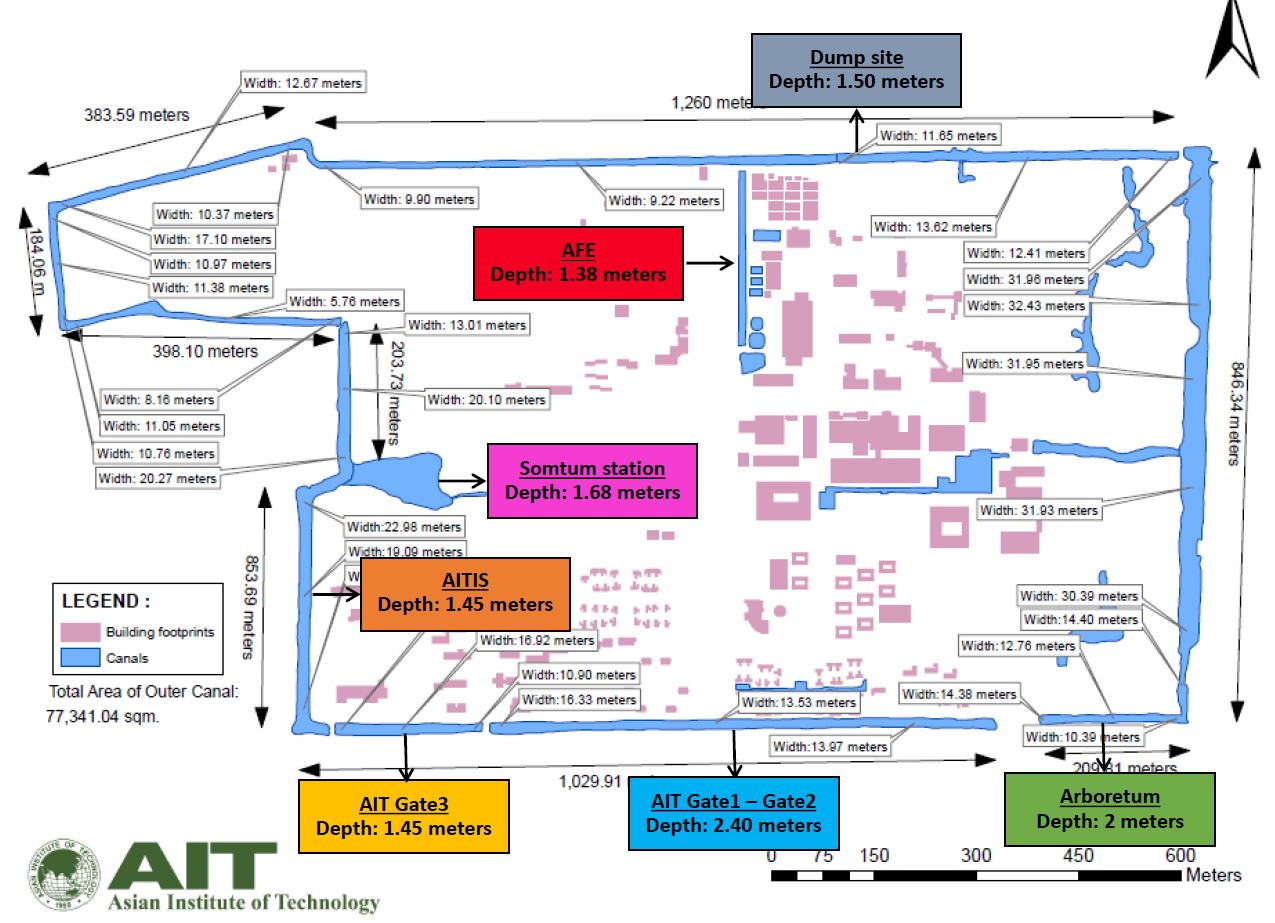

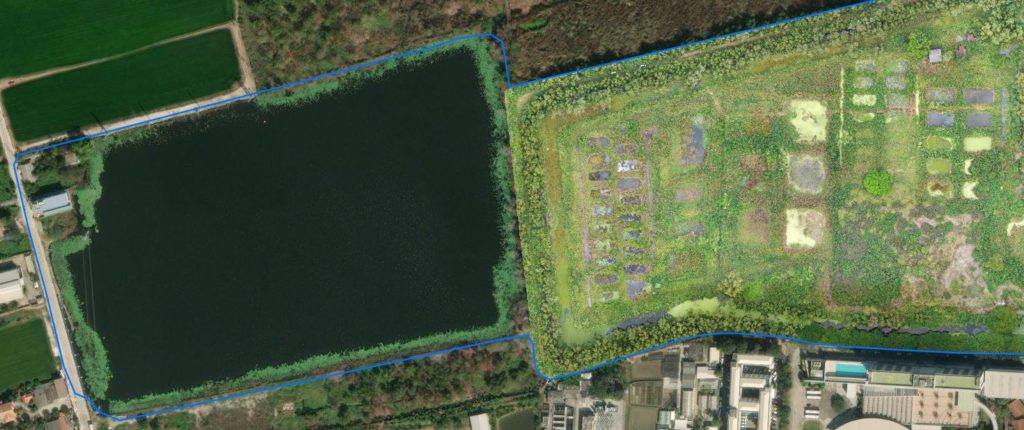
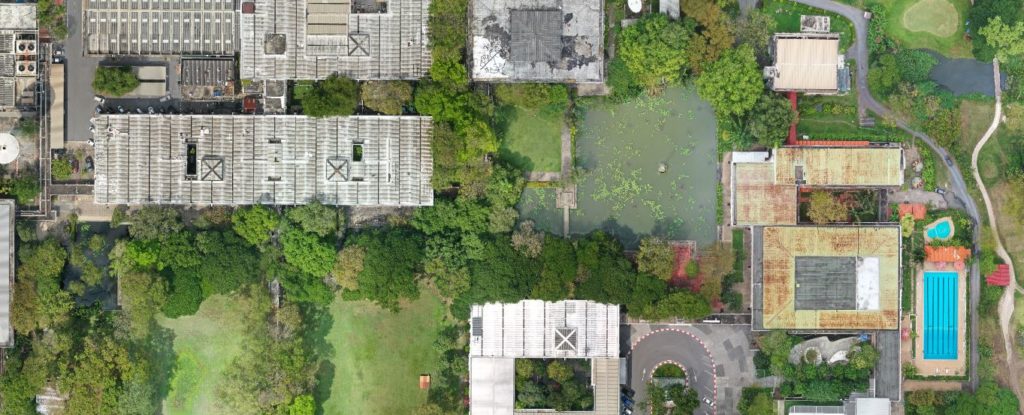
2. AIT water conservation operational measures
- Turn off taps tightly to ensure they do not drip
- Do not leave the tap running when not in use
- Always check for leaks in flushing cisterns, pipes and taps
- Repair appliances immediately within 2 days to prevent water wastage
- Organize water-saving campaigns and tips
- Install of water-efficient appliances in most of office
- Using rainwater harvesting for gardening
3. Treated Waste Water Recycling for Campus use
The Waste Water Treatment Plant (WWTP) of the Asian Institute of Technology with operation capacity : 1500 m3/day was constructed in 2012 by the Ranhill Water Technologies (Thai) LTD (RWTT), with the concept of BOT (Build, Operate and Transfer) Agreement. As per the agreement dated 22 June 2011, RWTT would construct the plant, operate, and maintain the plant during the payback period. The construction of the AIT WWP was completed on 18 July 2012. Since then Ranhill has been running the plant to treat wastewater collected from the AIT campus. On 1 January 2019, the waste water treatment plant ownership was transferred from RWTT to AIT. Since then AIT contracted RWTT to operate and provide maintenance services.
The WWTP collects the wastewater from the 133.12 hectares AIT campus which comprises both residential and academic areas, through 13 sewage pump sumps located throughout the campus. The water is treated as per the THAI obligation of the water treatment control standards of the Ministry of Science as per the below table.
The treated water which is maintained safe to avoid any kind of pollution is sent from the WWTP into the AIT canal system and partially to the external Canal / Klong in Klong Lunag. To save the piped water supply, the canal water in turn is used for watering the plants throughout the campus through a sprinkler system. Treated water helps to maintain the water level in canals and thereby also helps to maintain an aqua ecosystem in canals in the dry season.
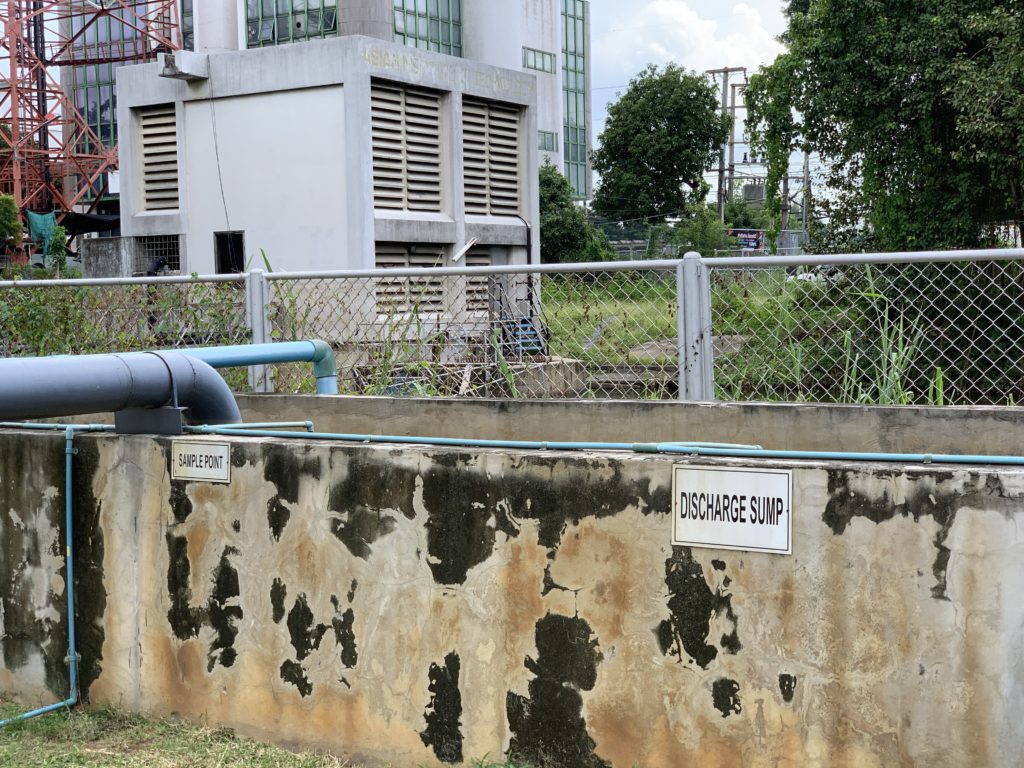
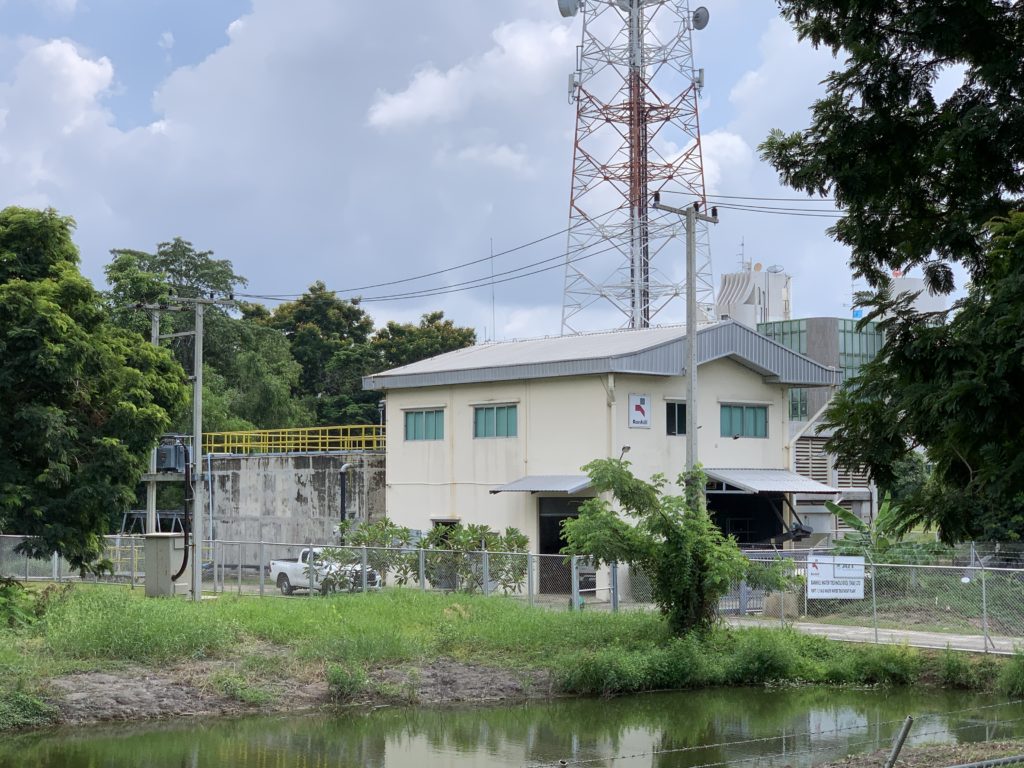
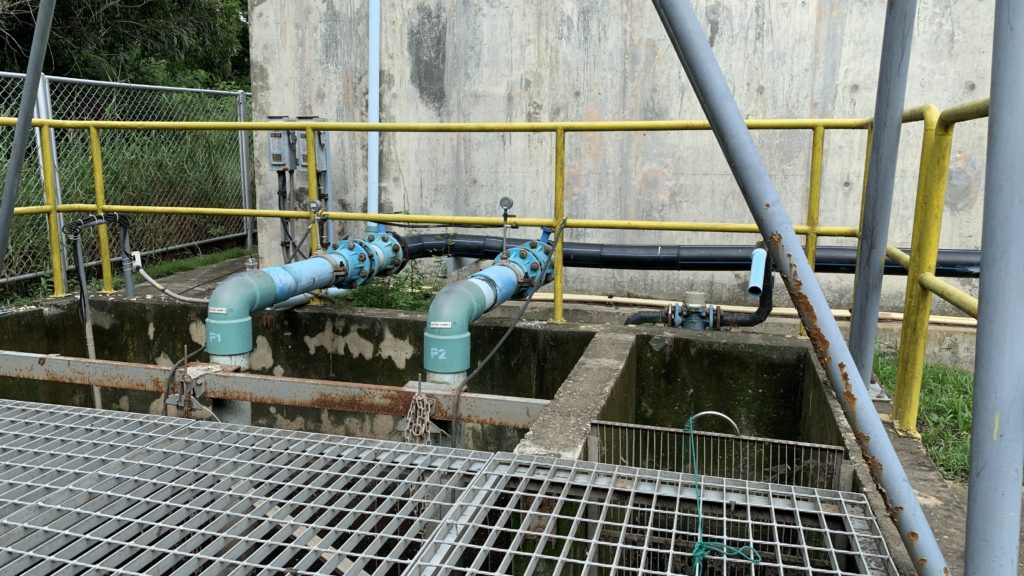
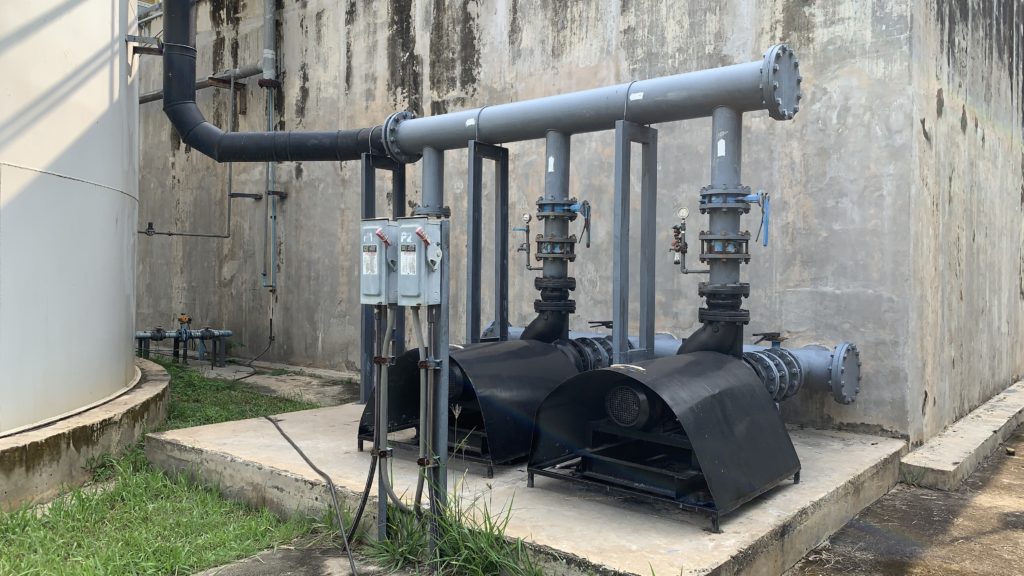
4. AIT measures for Fresh Water through Mangrove
Typically, freshwater wetland environments (canals, ponds, lakes, etc) in cities are easier available for tree planting than already overused and occupied terrestrial areas (parks, roadside green areas, etc): hence, these underutilized wet areas can be more effectively used by mangrove trees, as one mangrove tree is known to be equivalent to 6-8 conventional land trees in terms of C storage. Mangroves (inland-freshwater) are important to be promoted wherever possible, particularly in cities, because they are not only very biologically diverse ecosystems but exceptional carbon sequesters (up to 6-8 times greater than even highly productive rainforest trees). That is why they are major potential tools in global Biodiversity Loss and Climate Change mitigation and adaptation. Many, if not the majority, of tropical and subtropical cities are extensively freshwater environments:
hence, the relevance, usefulness, and importance of the further freshwater mangrove introduction.
The current project promotes ‘Botanical Garden Campus for Net Zero’ by 3 key eco-services (to mention just a few):
Enhanced C storage and sequestration towards the Net Zero emissions balance
Enhanced sanitation towards better and superior surface water quality
Enhanced biodiversity, both botanical and zoological, towards more amenable environment.
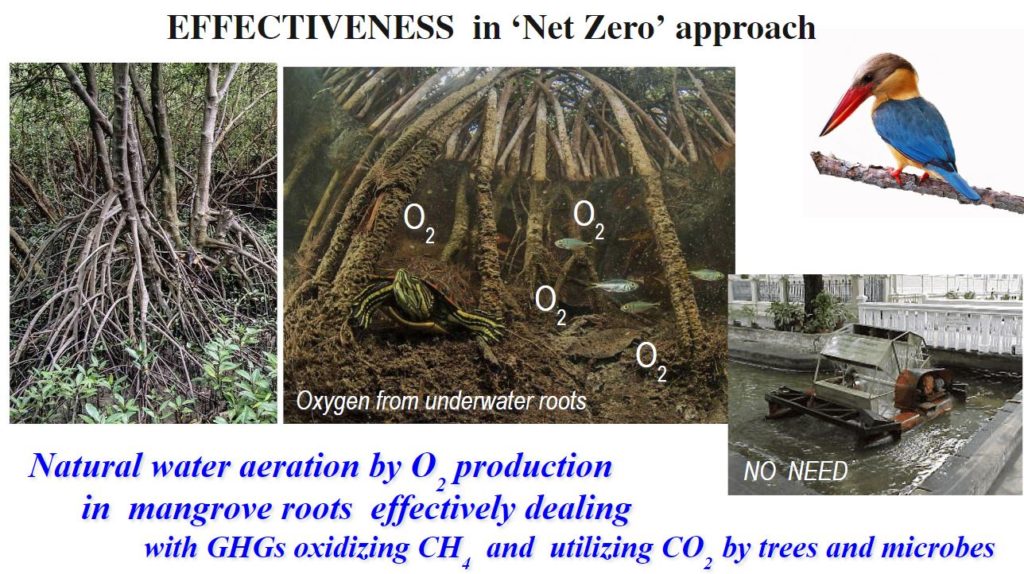
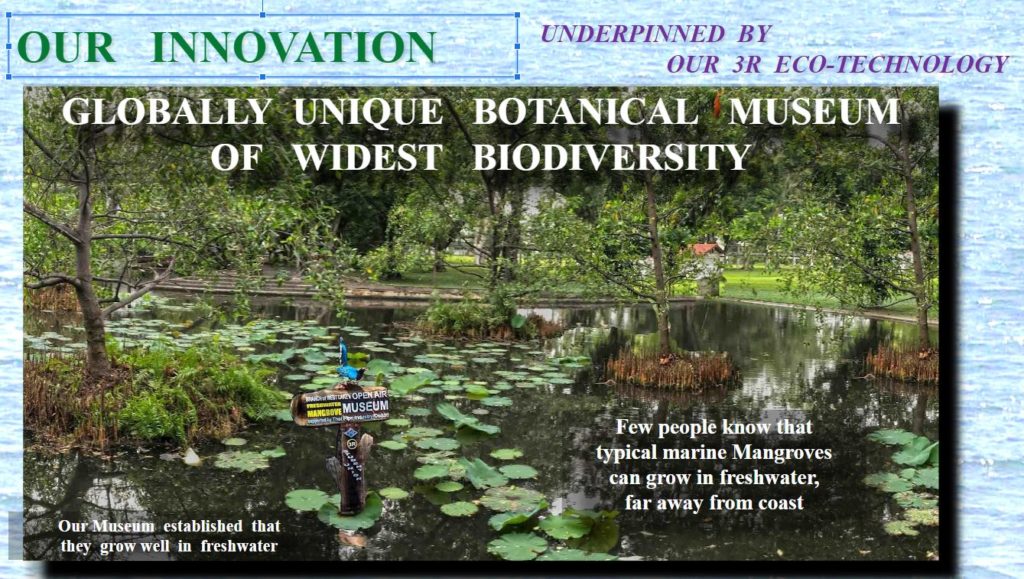
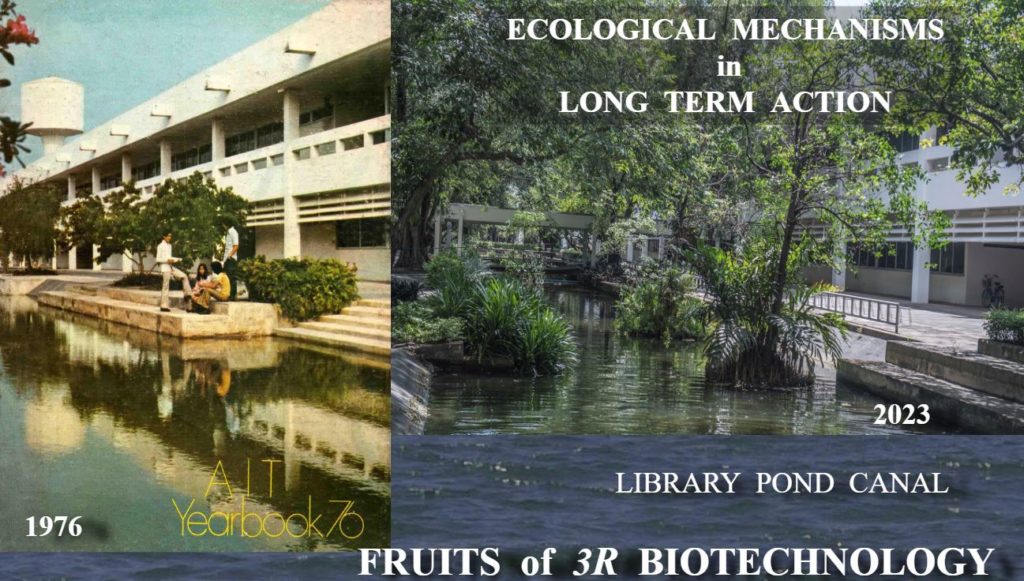
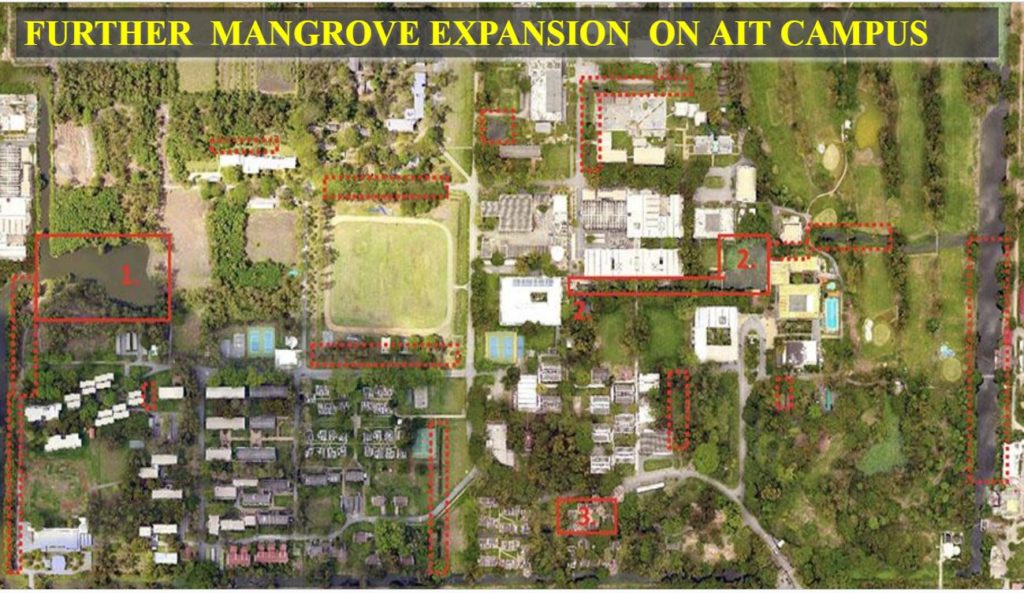
Mangrove Museum Related news : https://ait.ac.th/2020/07/freshwater-mangrove-museum-established-to-enhance-campus-health-and-sustainability/
5. Surface aerators to purify the canal water
AIT has a large closed loop canal system with many species of fishes and organisms. These water are the main source of water for the gardening needs of the whole campus. So its important that the quality of the water is maintained. Canal systems are particularly vulnerable to oxygenation problems. Reduced flow, increased depth, and isolation from the main waterbody cause low oxygen. Surface aerators push water from under the water’s surface up into the air, then the droplets fall back into the water, mixing in oxygen. The jets of water break the surface with varying degrees of force. Aeration reduces the variability experienced in these systems while improving water quality for a sustainable ecosystem.
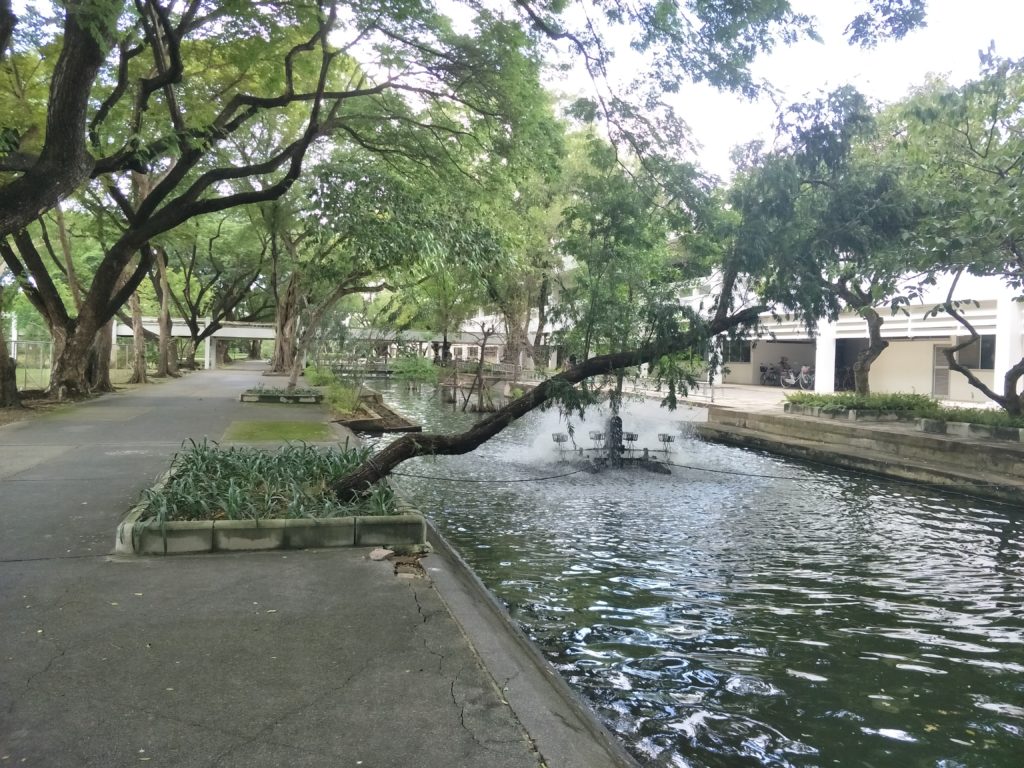
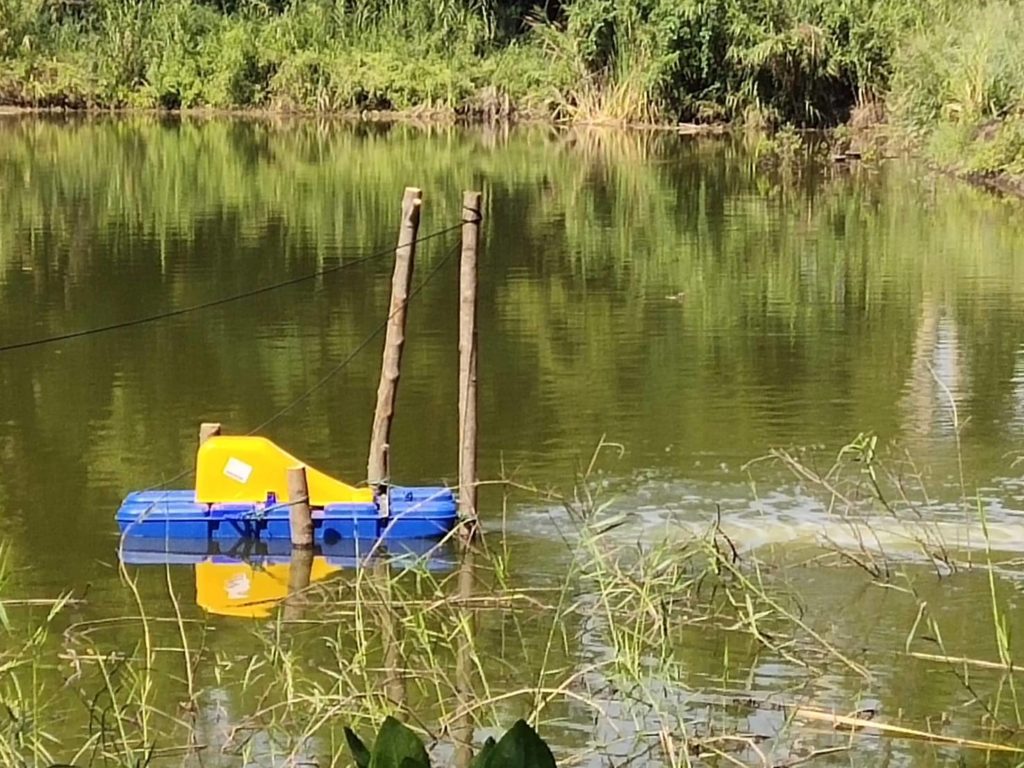
6. AIT Sprinkler for watering the plants
Within AIT, there exists a dedicated reservoir, covering an expansive 23.31-acre area, featuring depths that fluctuate between 1 meter and 2.5 meters. Complementing this reservoir is an outer closed loop canal area that spans 77,341.04 square meters across the campus, where depths range from 0.5 to 2.5 meters in different segments. The harvested rainwater serves the vital purpose of irrigating the extensive gardens and landscapes across the majority of the campus, substantially reducing our reliance on tap or freshwater sources. In areas where sprinklers are not present, the canal water is efficiently pumped into water tankers for the purpose of watering plants and trees. Below map show the wide spread sprinkler system around the campus and some pictures of the sprinkler around the campus and pumps. Water Sprinklers are scheduled for limited period of time as required by the kind of plants and garden spaces to conserve efficient water usage.

